|

On eBay Now...
India.Calcutta.Asia.Asia.9 Unique Stereo on Glass 45x107m.Glass view.1910. For Sale
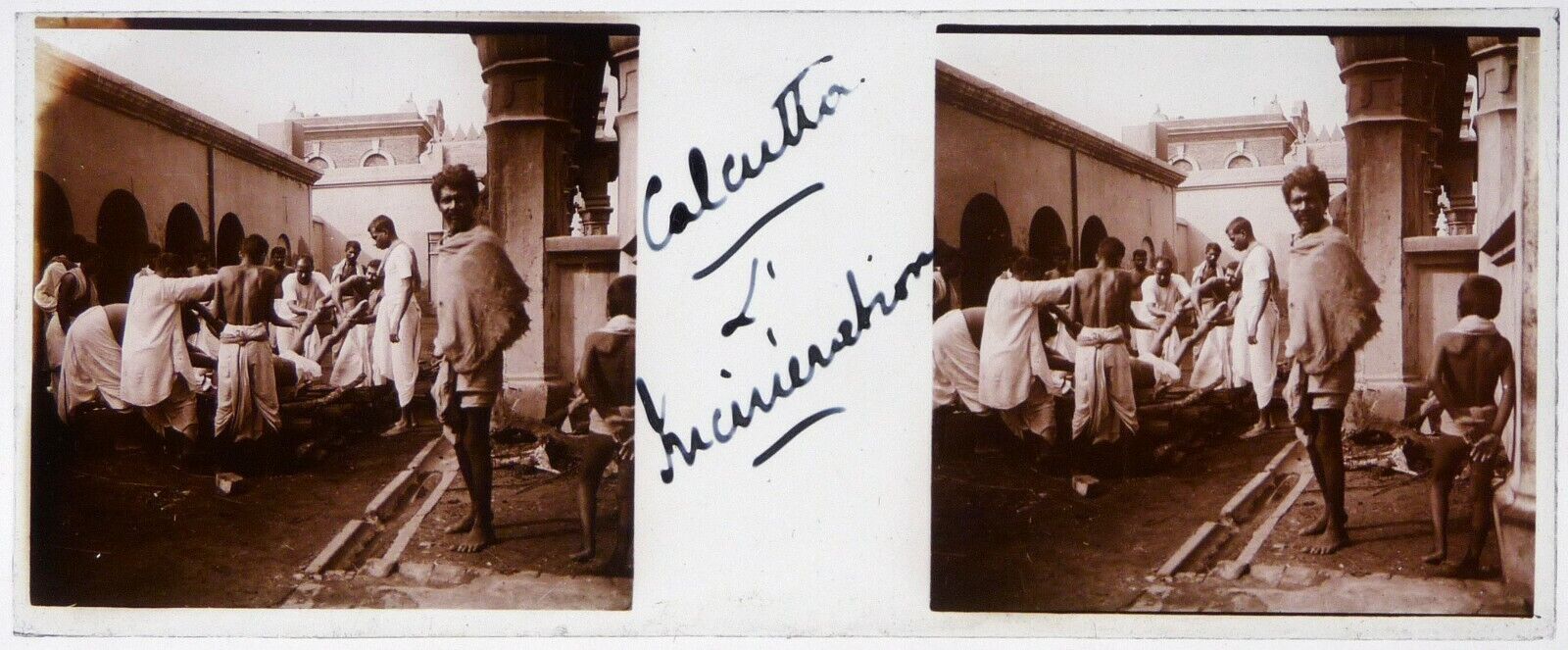
When you click on links to various merchants on this site and make a purchase, this can result in this site earning a commission. Affiliate programs and affiliations include, but are not limited to, the eBay Partner Network.

India.Calcutta.Asia.Asia.9 Unique Stereo on Glass 45x107m.Glass view.1910.:
$107.47
Pontichery,pousse-pousse devant les M.M.Calcutta,Laurence road,8,1910,voitures à coin de...le 7 1910,personnages.Indes,jeunes Hindous.Palmier du voyageur,Indes.Bénarès,les quais,personnages.Indes,la Mosquée deChandernagor.Calcutta,Kalighat Temple,les bains sacrés,juin 1910. Année 1910.9 Uniques vues Stéréo originales sur verre.Format 45x107mm.Etat:Voir photos, scan au plus proche de la réalité.Photographie sur verre. Envoi soigné,recommandé,protégé. Réduction frais de port pour achats multiples. Circa 1910.Vintage 9 Uniques Originals Glass stereo see scan closer to the reality.View. Shipping:multiple purchases, postage discount, wrappingcardbord,tracking registered delivery.
L\'Inde françaiseregroupe différentespossessions coloniales françaisesenIndeentre1668et1954. À partir de1816, elles portent le nom d\'Établissements français dans l\'Inde(EFI) et incluentPondichéry,KarikaletYanaonsur lacôte de Coromandel,Mahésur lacôte de MalabaretChandernagorauBengale. Le premier comptoir est installé àSurateen 1668 par laCompagnie française des Indes orientales, puis c\'est le tour de Pondichéry en 1673, de Chandernagor en 1686, de Mahé en 1721, de Yanaon en 1725 et de Karikal en 1739, constitués en districts d\'un même territoire, auxquels s\'ajoutent les comptoirs (ou loges) deBalasore,Cassimbazar,YougdiaNote 1,Dacca,Patna,Masulipatam,Calicutet Surate. L\'apogée de l\'Inde française se situe vers 1750, sousDupleix, pendant le règne deLouis XV, ou la France gère des colonies, sur la côte de Coromandel (séparées par Madras, colonisée par les Anglais), et des protectorats avec des statuts divers dans l\'intérieur des terres (dont Hyderabad, une grande partie du Deccan, etc.). Avec la bataille de Plassey (1757), le royaume de France commencera à perdre ses possessions françaises en Inde, pendant laguerre de Sept ans, et ces pertes sont actées par le traité de Paris, en 1763, après lequel la France ne conservera plus que cinq comptoirs en Inde. En1936, la population est estiméeà298851habitants (la grande majorité étant constituée d\'indigènes), dont 187870 (63%) pour Pondichéry, dont 70 français permanents (administrateurs, négociants, et religieux) et un peu moins de 130 occidentaux d\'origine européenne (dont Britanniques), américaine ou australienne1. Chandernagor est rendue à l\'Indedès 1950, le reste devenant indien en 1954. La superficie de ces possessions est alors de 492 kilomètres carrés en 1954 (contre 510 kilomètres carrés, en 1949, avec Chandernagor),dont 293km2pour Pondichéry. L\'Inde est le deuxième paysle plus peupléet leseptième pays le plus granddu monde. Le littoral indien s\'étend sur plus de sept mille kilomètres. Le pays a des frontières communes avec lePakistanau nord-ouest, laChineau nord et à l\'est-nord-est, leNépalau nord-est, leBhoutan, leBangladeshet laBirmanieà l\'est-nord-est. Sur l\'océan Indien, l\'Inde est à proximité desMaldivesau sud-sud-ouest, duSri Lankaau sud et de l\'Indonésieau sud-est. L\'Inde revendique également une frontière avec l\'Afghanistanau nord-ouest. L\'Inde dispose de l\'arme nucléairedepuis 1974 après avoir fait des essais officiels. L\'Inde est un foyer de civilisations parmi les plus anciennes du monde, lacivilisation de la vallée de l\'Induss\'y est développée dès3000av. J.-C.. Le sous-continent indien a abrité de vastes empires et est présent sur les routes commerciales dès l\'Antiquité. L\'Inde est la terre de naissance de quatre religions majeures —l\'hindouisme, lejaïnisme, lebouddhismeet lesikhisme— alors que lezoroastrisme, lechristianismeet l\'islams\'y sont implantés durant leIermillénaire. L\'hindouisme y est la religion majoritaire avec environ 80% de fidèles. l\'Inde est le troisième pays ayant la communauté musulmane la plus importante. L\'Inde est aujourd\'hui un pays très divers sur le plan religieux, linguistique et culturel. Le pays a été progressivement annexé par laCompagnie anglaise des Indesavant de passer sous le contrôle duRoyaume-Uniauxixesiècle. L\'Inde devientindépendanteen 1947 après une lutte marquée par la résistancenon-violenteduMohandas Karamchand Gandhiet plusieurs autres. Le pays est depuis1950unerépublique parlementairefédéraleconsidérée comme ladémocratiela plus peuplée au monde. En 2017, l\'économie indienneest la septième du monde enPIB nominalet la troisième enPIB à parité de pouvoir d\'achat. L\'Inde, pays à forte croissance économique, est considéré comme unnouveau pays industrialisé. Cependant certains problèmes comme lapauvreté, l\'analphabétismeou lacorruptionrestent très importants. Les inégalités de revenus sont en augmentation. En 2016, les 10% les plus riches disposaient de 55% des revenus nationaux5. L\'Inde est passée de la140eà la177eplace entre 2016 et 2018 sur l\'Indice de performance environnementale réalisé par des chercheurs des universités de Yale et de Columbia. L\'étude souligne en particulier la détérioration «alarmante» de la qualité de l\'air. India, officially theRepublic of India(Hindi:Bhārat Gaṇarājya),[23]is a country inSouth Asia. It is theseventh-largest countryby area, thesecond-most populouscountry, and the most populousdemocracyin the world. Bounded by theIndian Oceanon the south, theArabian Seaon the southwest, and th of Bengalon the southeast, it shares land borders withPakistanto the west;[f]China,Nepal, andBhutanto the north; andBangladeshandMyanmarto the east. In the Indian Ocean, India is in the vicinity ofSri Lankaand theMaldives; itsAndaman and Nicobar Islandsshare a maritime border withThailand,MyanmarandIndonesia. Modern humansarrived on theIndian subcontinentfrom Africa no later than 55,000 years ago.[24]Their long occupation, initially in varying forms of isolation as hunter-gatherers, has made the region highly diverse, second only to Africa in humangenetic diversity.[25]Settled lifeemerged on the subcontinent in the western margins of theIndusriver basin9,000 years ago, evolving gradually into theIndus Valley Civilisationof the third millennium BCE.[26]By 1200BCE, anarchaic formofSanskrit, anIndo-European language, haddiffusedinto India from the northwest,[27]unfoldingas the language of theRigveda, and recording the dawning ofHinduismin India.[28]TheDravidian languagesof India were supplanted in the northern and western regions.[29]By emerged within Hinduism,[30]andBuddhismandJainismhad arisen, proclaimingsocial ordersunlinked to heredity.[31]Early political consolidations gave rise to the loose-knitMauryaandGupta Empiresbased in theGanges Basin.[32]Their collectiveerawas suffused with wide-ranging creativity,[33]but also marked by the declining status of women,[34]and the incorporation ofuntouchabilityinto an organised system of belief.[g][35]InSouth India, theMiddle kingdomsexported Dravidian-languages scripts and religious cultures to the kingdoms ofSoutheast Asia.[36] In the early medieval era,Christianity,Islam,Judaism, andZoroastrianismput down roots on India\'s southern and western coasts.[37]Muslim armies fromCentral Asiaintermittently overran India\'s northern plains,[38]eventually establishing theDelhi Sultanate, and drawing northern India into the cosmopolitannetworks of medieval Islam.[39]In the 15th century, theVijayanagara Empirecreated a long-lasting composite Hindu culture in south India.[40]In thePunjab,Sikhismemerged, rejecting institutionalised religion.[41]TheMughal Empire, in 1526, ushered in two centuries of relative peace,[42]leaving a legacy of luminous architecture.[h][43]Gradually expandingrule of the British East India Companyfollowed, turning India into a colonial economy, but also consolidating itssovereignty.[44]British Crown rulebegan in 1858. The rights promised to Indians were granted slowly,[45]buttechnological changeswere introduced, and ideas of education, modernity and the public life took root.[46]A pioneering and influential nationalist movement emerged, which was noted for nonviolent resistance and became the major factor in ending British rule.[47]In 1947 the British Indian Empire waspartitionedinto two independentdominions, a Hindu-majorityDominion of Indiaand a Muslim-majorityDominion of Pakistan, amid large-scale loss of life and an unprecedented migration.[48][49] India has been afederal republicsince 1950, governed in a democraticparliamentary system. It is apluralistic, multilingual and multi-ethnic society. India\'s population grew from 361 million in 1951 to 1.211billion in 2011.[50]During the same time, its nominalper capita incomeincreased from US$64 annually to US$1,498, and its literacy rate from 16.6% to 74%. From being a comparatively destitute country in 1951,[51]India has become afast-growingmajor economyand a hub forinformation technology services, with an expanding middle class.[52]It hasa space programmewhich includes several planned or completedextraterrestrial missions. Indian movies, music, and spiritual teachings play an increasing role in global culture.[53]India has substantially reduced its rate of poverty, though at the cost of increasing economic inequality.[54]India is anuclear-weapon state, which ranks high inmilitary expenditure. It has disputes overKashmirwith its neighbours, Pakistan and China, unresolved since the mid-20th century.[55]Among the socio-economic challenges India faces aregender inequality,child malnutrition,[56]and rising levels ofair pollution.[57]India\'s land ismegadiverse, with fourbiodiversity hotspots.[58]Its forest cover comprises 21.7% of its area.[59]India\'s wildlife, which has traditionally been viewed with tolerance inIndia\'s culture,[60]is supported among these forests, and elsewhere, inprotected habitats.

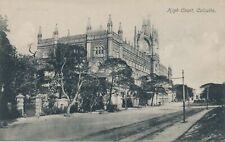
CALCUTTA - High Court - India $7.87
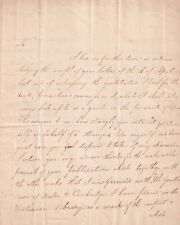
4-pg ltr d/l "Calcutta India Febry 4th 1824" from Raja Ram Mohan Rammohun Roy $16732.80
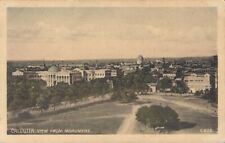
India Calcutta View from Monument 06.50 $4.99
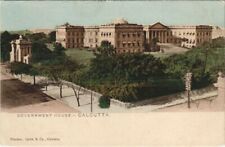
PC CALCUTTA GOVERNMENT HOUSE INDIA TINTED (a24864) $11.99
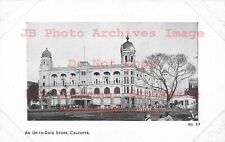
India, Calcutta, Up To Date Store, Exterior View, No 27 $7.99
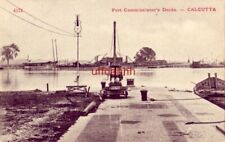
INDIA. PORT COMMISSIONER'S DOCKS - CALCUTTA $7.49
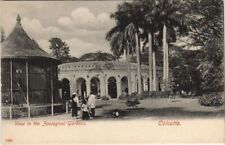
PC CALCUTTA ZOOLOGICAL GARDENS INDIA (a24851) $14.99
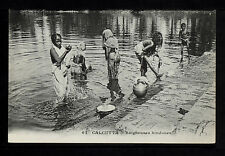
INDIA 381-CALCUTTA -Baigneses hindoues (Undivided Back) $13.02
|